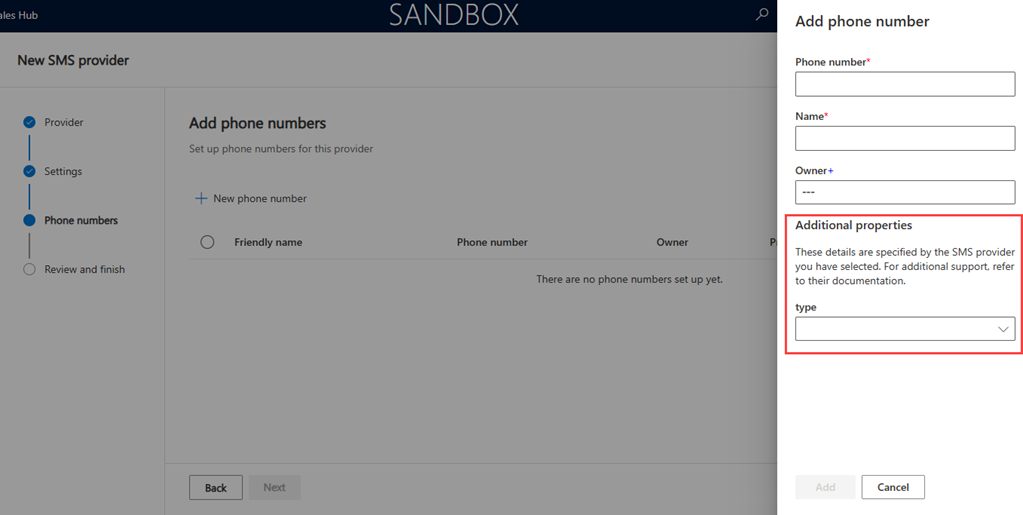Define an extended configuration entity for a channel instance
A Custom instance is the representation of a provider in Dynamics 365 Sales. When you create the channel, you need to configure a sender—for example, the sender of a text message. Each instance of a channel—that is, the entity Channel Instance—represents a single sender.
For each channel solution, you need to:
Create a custom table to represent the extended configuration of the Channel Instance table (msdyn_channelinstance) defined in the base solution.
The name of the table is assigned to the attribute msdyn_channeldefinitionexternalentity at the channel definition step.
Create and edit One-to-many or Many-to-one table relationships to the base Channel Instance table in the
msdyn_extendedentityidattribute.This attribute is a polymorphic lookup. Here's an example of the relationship in XML:
<EntityRelationship Name="msdyn_ChannelInstance_extendedentityid_cr65f_samplechannelinstance"> <EntityRelationshipType>OneToMany</EntityRelationshipType> <IsCustomizable>0</IsCustomizable> <IntroducedVersion>1.0.0.0</IntroducedVersion> <IsHierarchical>0</IsHierarchical> <ReferencingEntityName>msdyn_ChannelInstance</ReferencingEntityName> <ReferencedEntityName>cr65f_samplechannelinstance</ReferencedEntityName> <CascadeAssign>NoCascade</CascadeAssign> <CascadeDelete>RemoveLink</CascadeDelete> <CascadeReparent>NoCascade</CascadeReparent> <CascadeShare>NoCascade</CascadeShare> <CascadeUnshare>NoCascade</CascadeUnshare> <CascadeRollupView>NoCascade</CascadeRollupView> <IsValidForAdvancedFind>1</IsValidForAdvancedFind> <ReferencingAttributeName>msdyn_extendedentityId</ReferencingAttributeName> <RelationshipDescription> <Descriptions> <Description description="" languagecode="1033" /> </Descriptions> </RelationshipDescription> <EntityRelationshipRoles> <EntityRelationshipRole> <NavPaneDisplayOption>UseCollectionName</NavPaneDisplayOption> <NavPaneArea>Details</NavPaneArea> <NavPaneOrder>10000</NavPaneOrder> <NavigationPropertyName>msdyn_extendedentityid_cr65f_samplechannelinstance</NavigationPropertyName> <RelationshipRoleType>1</RelationshipRoleType> </EntityRelationshipRole> <EntityRelationshipRole> <NavigationPropertyName>msdyn_ChannelInstance_extendedentityid_cr65f_samplechannelinstance</NavigationPropertyName> <RelationshipRoleType>0</RelationshipRoleType> </EntityRelationshipRole> </EntityRelationshipRoles> </EntityRelationship>Create a form to expose the configuration fields.
The form is loaded in the Sales setup wizard. The form ID is assigned to the attribute msdyn_channeldefinitionexternalformid at the channel definition step.

Next steps
Define an extended configuration entity for a channel instance account